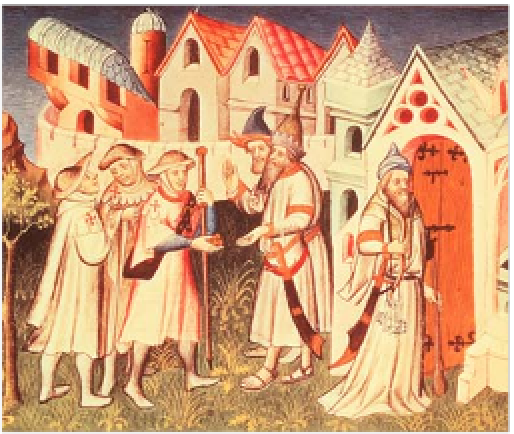Travel Reference
In-Depth Information
Celebrated Visitors
who, in the 14th century,
travelled over 120,000 km
(75,000 miles), also visited
Palestine. His journals
describe the Tombs of the
Prophets in Hebron
(see
p196)
, and Jerusalem's Dome
of the Rock
(see pp72-3)
, of
which he wrote, “It glows like
a mass of light and flashes
with the gleam of lightning.”
As a Spiritual or Utopian concept, Jerusalem
has, over the centuries, been celebrated by
poets and artists who have never been
there, and who would perhaps hardly
have known where it was on the map.
However, the Holy City and the Holy
Land have also been the subject of a
no less impressive number of accounts,
journals and paintings by a great many
well-known travellers, writers and
artists who did visit. From the early
19th century, the region also became a magnet for a
steady flow of archaeologists and biblical scholars.
Archaeologist
Charles Warren
REDISCOVERING
THE HOLY LAND
In the wake of Napoleon's
invasion of Egypt (1798)
and subsequent expedition
into Palestine, and the
interest it generated in
the Orient, Europeans
began to visit the
Holy Land. First
to arrive were
the explorers
and adventuring
archaeologists,
typified by
Johann Ludwig
Burckhardt
(see
p222)
, who was
one of the first
Westerners ever to
visit Jerash, and who
discovered Petra in
1812. Lady Hester
Stanhope was an
eccentric British aristocrat
who escaped from her high-
society existence to live in
Palestine. Although she did
conduct some haphazard
excavations in Ashkelon
(north of Gaza) in 1814, she
is more famous for wearing
men's clothing in order to
avoid wearing the veil.
In 1838, Edward Robinson,
an American Protestant
clergyman with an interest in
biblical geography, was the
first to make a proper critical
study of supposed holy sites;
his name is commemorated
in Robinson's Arch south of
the Western Wall
(see p91)
.
In 1867-70, excavations
south of the Haram esh-
Sharif were carried out by
Lieutenant Charles Warren of
the Royal Engineers, a man
who, some 20 years later,
would lead the investigations
into the infamous Jack the
Ripper serial murders in
as the basis for his own
Holy Land travels recounted
in
From the Holy
Mountain
(1996).
Early travellers
also visited the
Holy Land for
trade. The most
famous of the
merchants was
Marco Polo
who, in the
course of his
extensive travels,
was entertained
by the Crusaders in
their halls at Akko.
The works of early
Muslim travellers
include some lively
descriptions of the Holy City.
The 10th-century historian
El-Muqaddasi described
Jerusalem as “a golden basin
filled with scorpions”. The
Moroccan scholar Ibn Batuta
EARLY PILGRIMS
AND TRAVELLERS
The establishment of Christ-
ianity as the religion of the
Roman Empire in the 4th
century AD triggered a wave
of visitors, drawn by the
region's biblical associations.
One of the first pilgrims we
know of is a nun named
Egeria, who was perhaps
Spanish, and visited the Holy
Land from AD 380 to 415. An
11th-century manuscript found
in Italy in 1884 contained a
copy of her travel diary,
which makes frequent men-
tion of places such as Sinai
and Jerusalem. Present-day
writer William Dalrymple used
a similar historical account
(the journal of John Moschos,
a 6th-century monk who wan-
dered the Byzantine world)
Lady Hester
Stanhope
Pilgrims in Jerusalem from the
Book of Marvels
on Marco Polo's travels
s











